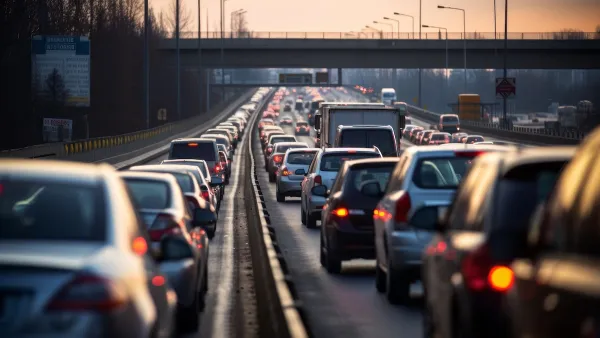I never put much thought into the term “post-industrial.” In my college and grad years, the phrase seemed to be used like candy – a ubiquitous summary of the current state of cities in the US. The phrase implies a kind of death in our cities, an inability to retain the industries that spurred their very growth.
I never put much thought into the term "post-industrial." In my college and grad years, the phrase seemed to be used like candy – a ubiquitous summary of the current state of cities in the US. The phrase implies a kind of death in our cities, an inability to retain the industries that spurred their very growth.
The term, first promoted by Daniel Bell in the early 1970s, is based on the trends that we have all come to know too well. In the golden years of our industrial age, smokestacks and factories sat cheek by jowl with nearby homes. Over time, industrial geography dispersed. Some moved to suburban or exurban areas, others overseas. Many "new" industrial uses (particularly those occupying space in exurban locations) occupied more space and resulted in bigger and flatter boxes. The large box trend left cities with little bargaining power as larger urban sites for redevelopment are hard to come by. In some cities, urban renewal programs in the 50s and 60s were able to carve out industrial space but today, space in cities is often limited compared to what's available further afield.
As industry dispersed, each city was impacted differently. Detroit's decline was markedly swifter than that in Philadelphia which had a more diverse base of industries. But the end result is the same. The often highly visible, vacant and obsolete industrial land has spurred the use of short-hand monikers like "rust-belt" city for added insult.
But the term "post-industrial" isn't really accurate. True, there have been changes and cities are not the powerhouses of industrial manufacturing in the ways they once were, but many cities also retain a healthy base of industrial use, even quite a few of those "rust-belt" ones. Philadelphia, for instance, still has a diverse industrial base and only about an 11% vacancy rate in its industrial stock. Now, coming into Philadelphia via Amtrak would have you believe that percentage should be a lot higher. But despite these moments, there is a significant amount of production remaining in the city and local employment is very much tied to what's made, packaged, distributed and ultimately sold locally. That's not to say we should cling to formerly industrial land in hopes that "formerly" will be replaced by "new," but industrial uses deserve consideration and discussion.
Some of the issue is inevitably wrapped in the perception of what industry is. Smokestacks, loud machinery, toxins hairnets - these are the words that spring to mind. But a broader view today includes a whole range of production including research, artisanal and, depending on how we define it, green jobs. Combined with the smaller distributers, wholesalers and other old school, but micro-industries, there is a rich economic sector that benefits from the density, activity and available workforce in urban areas. And many of these uses can, and frequently do, sit comfortably next to homes, stores and parks.
"Post industrial" feels like we've just given up. But what is made locally is so important to a city's identity and vibe. A colleague suggested "older industrial." More accurate but in an age of political correctness and tact, maybe we should consider "experienced industrial" or "established industrial." I'm open to suggestions.

Planetizen Federal Action Tracker
A weekly monitor of how Trump’s orders and actions are impacting planners and planning in America.

Maui's Vacation Rental Debate Turns Ugly
Verbal attacks, misinformation campaigns and fistfights plague a high-stakes debate to convert thousands of vacation rentals into long-term housing.

San Francisco Suspends Traffic Calming Amidst Record Deaths
Citing “a challenging fiscal landscape,” the city will cease the program on the heels of 42 traffic deaths, including 24 pedestrians.

Amtrak Rolls Out New Orleans to Alabama “Mardi Gras” Train
The new service will operate morning and evening departures between Mobile and New Orleans.

The Subversive Car-Free Guide to Trump's Great American Road Trip
Car-free ways to access Chicagoland’s best tourist attractions.

San Antonio and Austin are Fusing Into one Massive Megaregion
The region spanning the two central Texas cities is growing fast, posing challenges for local infrastructure and water supplies.
Urban Design for Planners 1: Software Tools
This six-course series explores essential urban design concepts using open source software and equips planners with the tools they need to participate fully in the urban design process.
Planning for Universal Design
Learn the tools for implementing Universal Design in planning regulations.
Heyer Gruel & Associates PA
JM Goldson LLC
Custer County Colorado
City of Camden Redevelopment Agency
City of Astoria
Transportation Research & Education Center (TREC) at Portland State University
Jefferson Parish Government
Camden Redevelopment Agency
City of Claremont




























